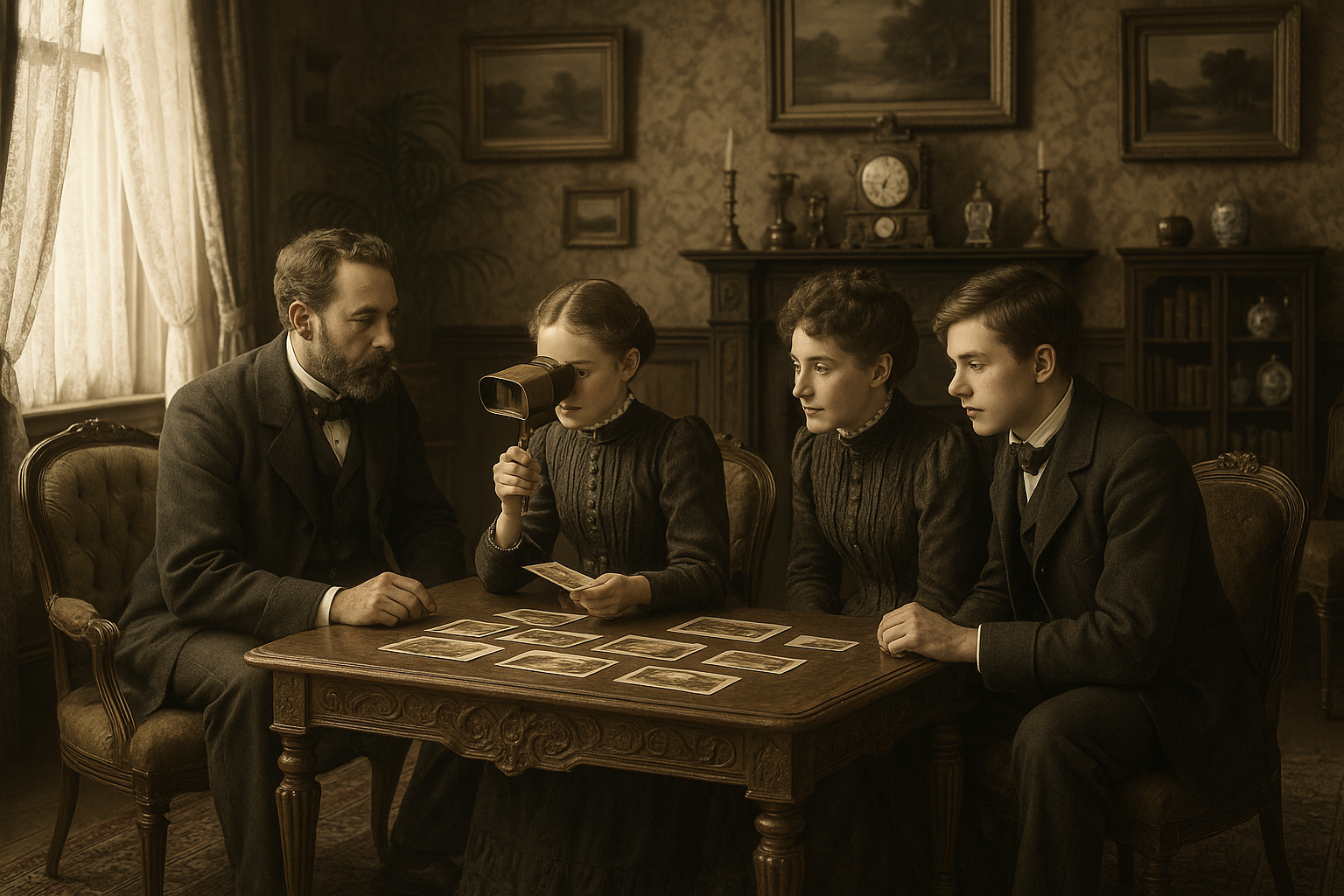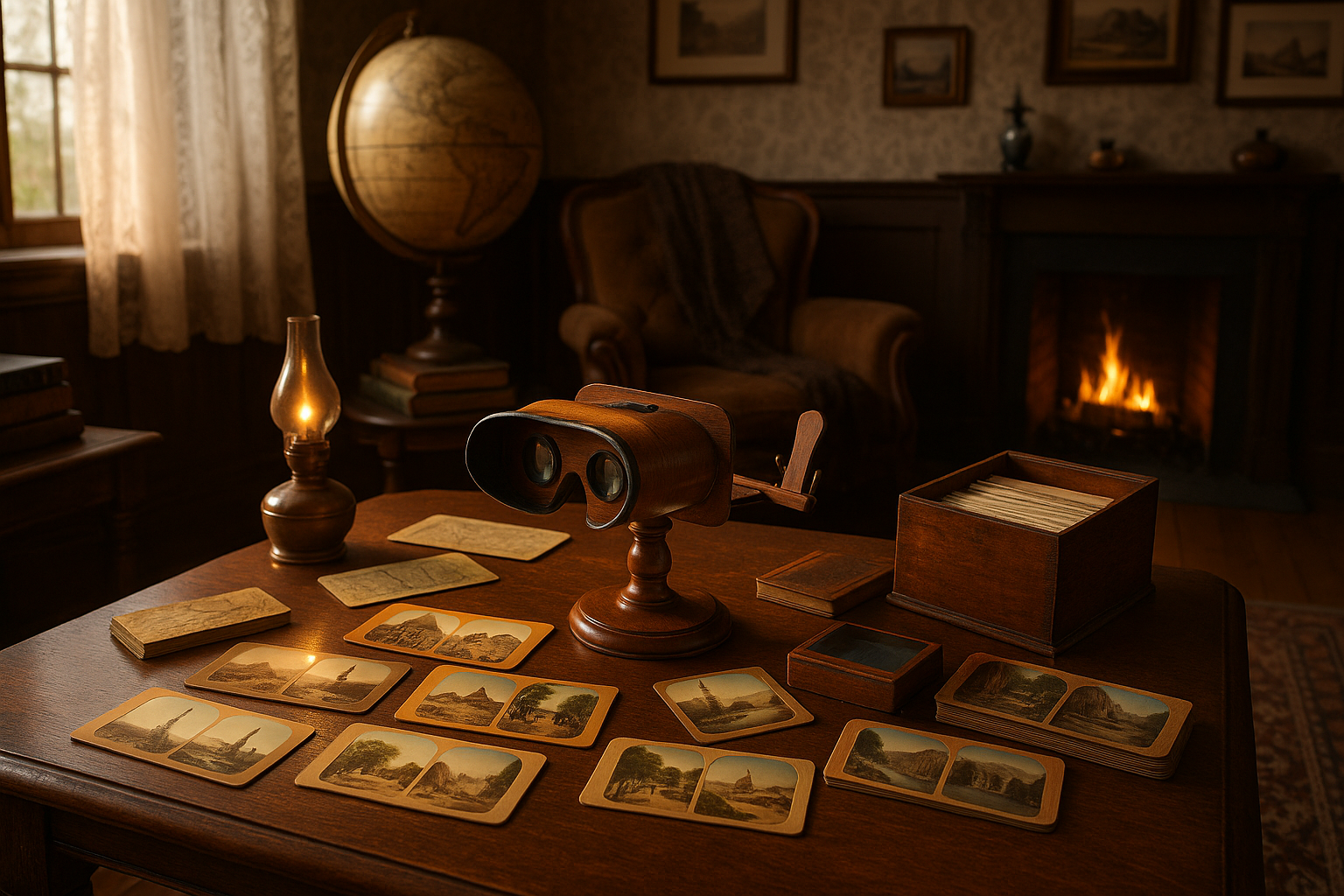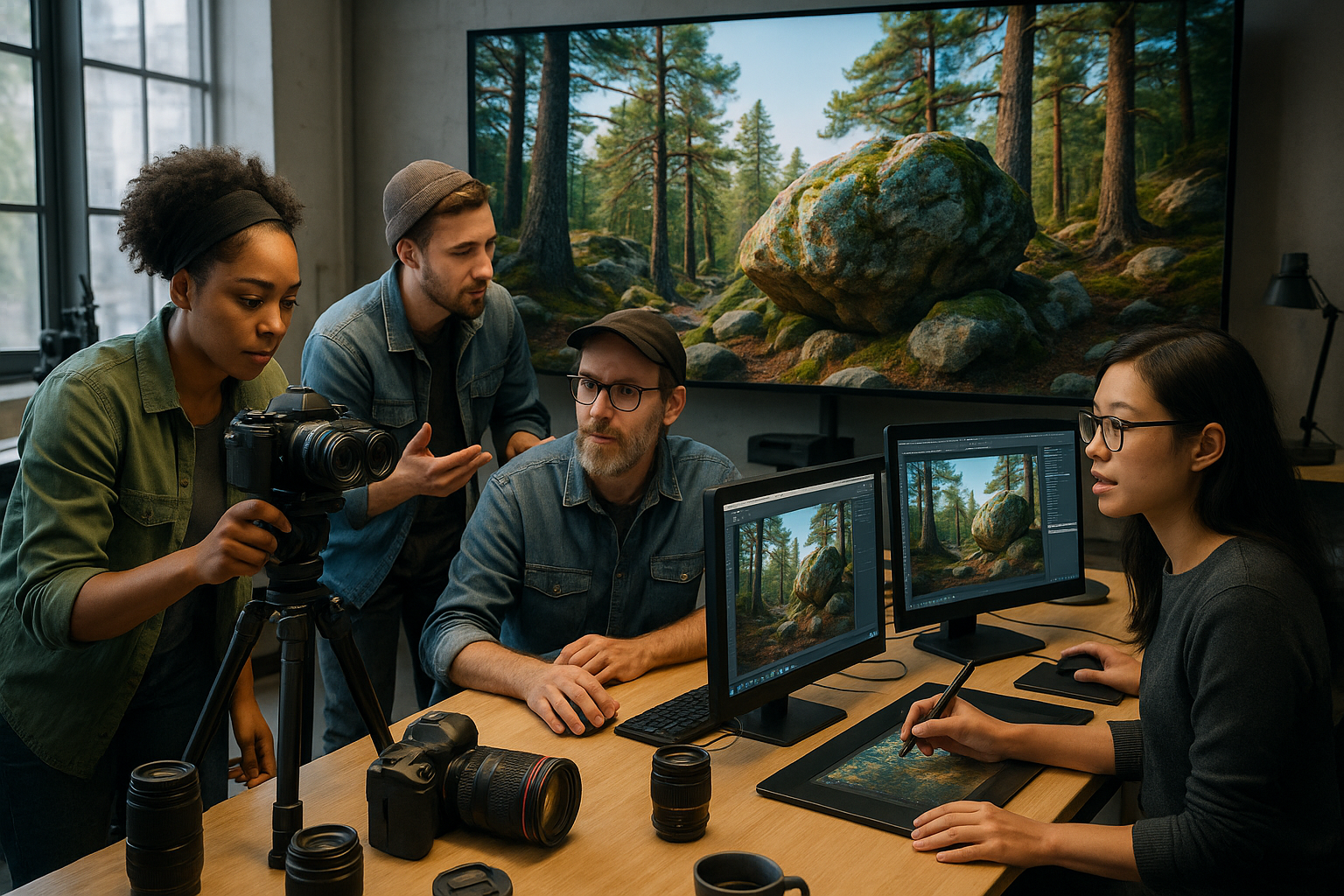In the ever-evolving landscape of technology, where innovation is the driving force behind progress, the world of stereoscope patents stands out as a fascinating testament to human ingenuity. 🌍 These ingenious devices, which once captivated audiences with their ability to create the illusion of depth and dimension, have a storied history that is as rich as it is complex. From the early days of simple stereoscopic images to the cutting-edge 3D innovations of today, stereoscopes have played a pivotal role in shaping how we perceive and interact with visual media. This journey through time is not only a testament to the power of invention but also a blueprint for understanding how patents have fueled the engine of 3D innovation.
Stereoscopes, at their core, are devices designed to create a sense of depth by presenting two slightly offset images to the viewer’s eyes. The magic happens as the brain fuses these images into a single, three-dimensional scene. This seemingly simple mechanism has paved the way for a multitude of applications, from entertainment and education to medicine and beyond. But how did we get from the rudimentary stereoscopes of the 19th century to the sophisticated virtual reality headsets of today? And what role did patents play in this evolution? These questions form the crux of our exploration into the world of stereoscope patents.
The journey begins in the mid-1800s, a period marked by a fervor of invention and discovery. It was a time when the stereoscope emerged as a popular medium for visual storytelling, captivating the imaginations of people around the globe. This era of innovation laid the groundwork for future advancements, as inventors raced to secure patents for their unique contributions to the field. These patents not only protected their creators’ intellectual property but also served as a catalyst for further experimentation and development. As we delve into the archives of history, we uncover the stories behind some of the most influential patents and the visionary minds who brought them to life.
Fast forward to the 21st century, and we find ourselves in a world where 3D technology is ubiquitous, spanning industries from film and gaming to architecture and medicine. The path to this modern-day marvel, however, was not without its challenges. Navigating the complex landscape of patents and intellectual property rights required a delicate balance between fostering innovation and ensuring fair competition. In this article, we will explore how the legal framework surrounding stereoscope patents has evolved over time, and how it continues to shape the future of 3D technology.
As we embark on this journey through the world of stereoscope patents, we invite you to discover the intersection of art, science, and law that has driven one of the most exciting technological advancements of our time. From the pioneers who dared to dream of a three-dimensional world to the legal battles that defined the industry, this exploration offers a comprehensive look at the past, present, and future of 3D innovation. So, grab your virtual passport and join us as we unlock the secrets of stereoscope patents and navigate the path to a world of endless possibilities. 🔍
Understanding Stereoscopes: A Brief History
The stereoscope, a device for viewing images in three dimensions, has a rich history that dates back to the early 19th century. Developed initially by Sir Charles Wheatstone in 1838, the stereoscope capitalized on the principle of binocular vision to create the illusion of depth. Wheatstone’s design utilized mirrors to reflect images into the viewer’s eyes, effectively simulating a three-dimensional perspective. Later, the renowned scientist David Brewster improved upon Wheatstone’s invention by creating a more compact version with lenses, paving the way for the mass production of stereoscopes.
Stereoscopes gained significant popularity in the late 19th and early 20th centuries as a form of entertainment and education. They allowed people to experience far-off places and events in a realistic manner, making them a staple in many households. As photography evolved, so did the images used in stereoscopes, expanding from hand-drawn illustrations to photographic slides. This evolution not only enhanced the viewing experience but also broadened the applications of stereoscopes in fields such as medicine, education, and even military training.
The advent of digital technology has breathed new life into the concept of stereoscopy. Modern virtual reality (VR) headsets and 3D displays owe much of their foundational technology to the principles established by early stereoscopes. Understanding the history and development of stereoscopes is crucial for anyone interested in 3D innovation, as it provides insights into the progression of visual technology and its impact on modern devices. For a deeper dive into the origins of stereoscopes, check out this informative video on YouTube: The History of the Stereoscope – Science Museum.
The Anatomy of a Stereoscope Patent
Securing a patent for a stereoscope-related invention involves understanding the intricacies of patent law and the specific components that make up a patent application. At its core, a patent is a legal document that grants the inventor exclusive rights to their invention, preventing others from making, using, or selling the invention without permission. The first step in the patent process is conducting a thorough patent search to ensure that the invention is novel and not already patented by someone else.
A typical patent application includes several key sections: the abstract, the background of the invention, a summary of the invention, detailed descriptions, and claims. The abstract provides a brief overview of the invention, while the background section outlines the problem the invention addresses and any prior art. The summary and detailed descriptions explain the invention’s components and operation, often accompanied by drawings or diagrams. The claims, arguably the most critical part of the application, define the legal boundaries of the patent.
Navigating the patent application process can be complex, especially for first-time inventors. It’s advisable to seek the assistance of a patent attorney or agent who can provide guidance on drafting the application and ensure that it meets all legal requirements. A well-prepared patent application not only protects the inventor’s rights but also increases the likelihood of the invention’s success in the marketplace. To see how patents can impact 3D technology, explore this engaging discussion on YouTube: 3D Technology Patents – Tech Talks.
Comparing Modern 3D Technologies
Today’s 3D technology landscape is vast and varied, with numerous innovations transforming the way we perceive and interact with visual content. From virtual reality headsets to 3D printing, the applications of 3D technology are extensive. To understand the current state of 3D innovation, it’s essential to compare different technologies and their unique features.
One of the primary distinctions in 3D technology is between passive and active systems. Passive 3D systems, such as those used in cinemas, rely on polarized glasses to create the illusion of depth. These systems are typically more affordable and easier to implement but may offer lower image quality compared to active systems. Active 3D systems, on the other hand, use shutter glasses that synchronize with the display to alternate between images for each eye, resulting in a more immersive experience.
Another significant development in 3D technology is the rise of augmented reality (AR), which overlays digital content onto the real world. Unlike virtual reality, which immerses the user in a completely digital environment, AR enhances the physical world with interactive elements. This technology has found applications in fields such as gaming, education, and industry. To see a comprehensive comparison of these technologies, check out the table below:
| Technology | Features | Applications | Advantages | Limitations |
|---|---|---|---|---|
| Virtual Reality (VR) | Immersive digital environments | Gaming, Training, Education | Highly immersive | Requires special hardware |
| Augmented Reality (AR) | Overlay digital content on real world | Retail, Education, Healthcare | Enhances real-world interactions | Limited field of view |
| 3D Printing | Creates physical objects from digital models | Manufacturing, Prototyping, Medicine | Customizable production | Material limitations |
Understanding these technologies and their applications can provide valuable insights for innovators and businesses looking to leverage 3D capabilities. As you explore the world of 3D technology, consider how these advancements can be integrated into your projects or business strategies. For a visual comparison of these technologies, watch this video on YouTube: VR vs AR: The Future of Technology – Tech Insider.
Key Considerations for Innovators in Stereoscopic Technology
For inventors and businesses venturing into the field of stereoscopic technology, there are several critical considerations to keep in mind. First and foremost is the importance of understanding the target market and identifying specific needs that the stereoscopic innovation can address. This involves conducting market research to gather insights on consumer preferences, existing products, and potential gaps that the new technology can fill.
Another essential consideration is the technological feasibility of the innovation. This involves assessing the technical requirements and capabilities needed to develop the product, as well as the availability of resources such as skilled personnel and funding. Collaborating with experts in fields such as optics, software development, and industrial design can significantly enhance the innovation process and increase the likelihood of success.
Lastly, legal considerations, particularly regarding intellectual property rights, are crucial for protecting and commercializing stereoscopic innovations. As previously discussed, securing a patent can safeguard the invention and provide a competitive edge in the market. Additionally, innovators should be aware of any existing patents that could potentially affect their product and seek legal counsel to navigate potential challenges. For further insights into these considerations, watch this enlightening video on YouTube: Innovating in 3D: Challenges and Opportunities – Innovator’s Hub.
- Conduct thorough market research to identify opportunities.
- Assess technological feasibility and resource availability.
- Secure intellectual property rights to protect innovations.
- Collaborate with experts to enhance the innovation process.
Innovators in the realm of stereoscopic technology have the opportunity to shape the future of 3D experiences, and understanding these key considerations can play a pivotal role in achieving success. As you embark on your journey in this dynamic field, remember to leverage the wealth of resources and expertise available to maximize your potential for impact and innovation.

Conclusion
In concluding our exploration of stereoscope patents and their pivotal role in advancing 3D innovation, it’s essential to underscore the significant points discussed and highlight the broader implications of this fascinating field. Through our journey, we’ve delved into the intricate world of stereoscopes, examined their historical evolution, and understood their impact on modern technological advancements. We’ve also identified the challenges and opportunities associated with navigating the complex landscape of stereoscope patents. This conclusion aims to encapsulate these insights while encouraging further engagement and application.
Firstly, we revisited the historical roots of the stereoscope, a device that fundamentally transformed the way people perceived images. The stereoscope’s ability to render three-dimensional images from two-dimensional photographs marked a significant leap in visual technology, laying the groundwork for future developments in 3D imaging. This history serves as a testament to human ingenuity and the relentless pursuit of enhancing our sensory experiences.
As we transitioned to the modern era, we explored the profound influence of stereoscopic technology on various industries, ranging from entertainment and education to medicine and virtual reality. The ability to create immersive environments has revolutionized the way we interact with digital content, offering unprecedented levels of engagement and realism. This innovation is not merely a technical achievement; it represents a paradigm shift in how we experience the world around us.
Central to this discussion is the role of patents in fostering innovation. Patents serve as a critical mechanism for protecting intellectual property, ensuring that inventors can reap the benefits of their creativity and hard work. In the context of stereoscopes, patents have driven technological advancements by incentivizing research and development. However, navigating the patent landscape can be challenging, requiring a keen understanding of legal frameworks and strategic foresight.
The challenges associated with patenting stereoscopic technologies are manifold. Innovators must grapple with issues such as patent infringement, the ever-evolving nature of technology, and the need to balance proprietary interests with the broader public good. Despite these challenges, the patent system remains a cornerstone of innovation, encouraging the continuous evolution of stereoscopic technology.
Throughout this article, we’ve highlighted various case studies and examples that illustrate the successful application of stereoscopic patents. These examples serve as inspiration for aspiring inventors and entrepreneurs, demonstrating the potential for innovation within this field. They also underscore the importance of collaboration and knowledge sharing, as advancements in technology are often the result of collective effort and cross-disciplinary insights.
In reflecting on the importance of stereoscope patents, it becomes clear that they are more than just legal instruments; they are catalysts for progress. By protecting and promoting innovation, patents play a crucial role in driving economic growth, enhancing quality of life, and expanding the boundaries of human potential. The ongoing advancements in 3D technology promise to open new frontiers in fields such as augmented reality, simulation training, and beyond, offering exciting opportunities for those willing to venture into this dynamic landscape.
As we conclude, it’s crucial to acknowledge the need for continued exploration and discourse in this area. We encourage readers to delve deeper into the subject, share their insights, and contribute to the collective understanding of stereoscopic technologies. Whether you’re a seasoned professional, an aspiring inventor, or simply a curious mind, your engagement is invaluable.
To further your knowledge, we recommend exploring active resources and publications that offer in-depth analyses and up-to-date information on stereoscopic technology and patent law. Engaging with professional networks and forums can also provide valuable opportunities for learning and collaboration.
In summary, the world of stereoscope patents is a vibrant and evolving domain, rich with opportunities for innovation and impact. As we’ve journeyed through its intricacies, it is evident that the potential for growth and advancement is vast. We invite you to carry forward the insights gained, to challenge conventional boundaries, and to be a part of shaping the future of 3D innovation.
Thank you for joining us on this exploration. We hope it has inspired you to think creatively, act boldly, and embrace the possibilities that lie ahead. 🌟
[Note: For further reading, explore sources like the United States Patent and Trademark Office (USPTO) website and reputable technology journals. Ensure to verify the links’ activity and content.]
Toni Santos is a visual historian and artisan whose creative lens is captivated by the forgotten marvels of antique optical devices. Through his thoughtful storytelling, Toni revives the instruments that once transformed light into wonder—camera obscuras, magic lanterns, kaleidoscopes, and other ingenious tools that shaped our earliest visual imaginations.
His journey is rooted in a fascination with how humans have long sought to bend, reflect, and reveal the unseen. Whether tracing the mechanical poetry of 19th-century projectors or illustrating the tactile elegance of early lenses, Toni’s work invites us to see vision itself as an evolving art form.
Blending handcrafted design with historical inquiry, Toni brings to life the material soul of these devices—celebrating not just how they functioned, but what they meant. His creations and curated stories illuminate a world where science, illusion, and beauty were intricately linked through glass and brass.
As the curator of Vizovex, Toni shares detailed studies, reconstructed artifacts, and immersive content that help others rediscover the origins of visual technology and the magic of analog perception.
His work is a tribute to:
The craftsmanship behind early visual instruments
The wonder of seeing through the eyes of another century
The intersection of optics, art, and imagination
Whether you’re a collector, a designer, or someone drawn to the lost poetry of vision, Toni welcomes you into a world where light is a storyteller—one prism, one lens, one forgotten invention at a time.





